14.09.2020

More than a half-century ago, in September 1966, Gemini XI astronauts Charles “Pete” Conrad and Dick Gordon embarked on a mission which would set a record for the highest altitude ever reached by humans on a non-lunar spaceflight. Launched within a two-second “launch window” on 12 September 1966 the two men—already best buddies after serving as together on the U.S.S. Ranger a decade earlier—completed the first-ever rendezvous and docking with another space vehicle, on their very first orbit of Earth, before setting out on the remainder of their complex three-day mission: two spacewalks and an altitude which afforded them spectacular views of the Home Planet from 850 miles (1,370 km).
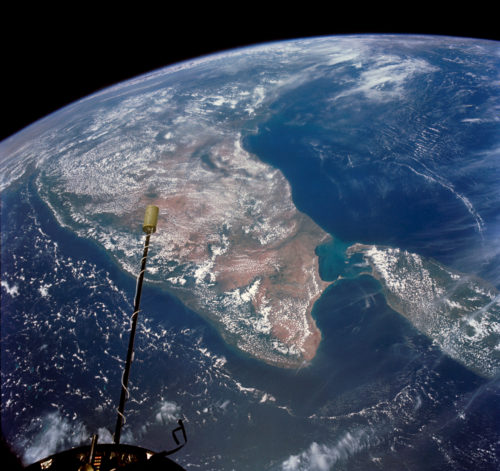
As outlined in yesterday’s AmericaSpace history article, the “direct-ascent” orbital meet-up with an unmanned Agena Target Vehicle was necessary for Project Apollo, whose Command and Service Module (CSM) would need to find, rendezvous and dock with a Lunar Module (LM) ascent stage as it rose from the surface of the Moon. Docking with the Agena only 94 minutes after liftoff was an astonishing accomplishment, but Conrad and Gordon’s first task was to undock, then redock, in order to demonstrate a key aspect of Lunar Orbital Rendezvous (LOR) capability in Earth orbit.
The high-altitude component of Gemini XI was completed on 14 September, two days into the mission. The Agena’s main engine was fired to boost the combined ships to an altitude of 850 miles (1,370 km). With the exception of the Apollo missions to the Moon, this remains a world record for the highest Earth-orbital altitude ever achieved by any astronaut or cosmonaut.
By this time, Gordon had also done an ambitious spacewalk. However, during the final preparations, the two astronauts realized that they needed much less time than anticipated to prepare their suits and equipment. Although Gordon would be performing the Extravehicular Activity (EVA), the procedures required the cabin to be reduced to vacuum and thus demanded that Conrad be fully-suited, too.
At length, they hooked up Gordon’s environmental support system and conducted several oxygen-flow checks, which proved to be a mistake because it dumped oxygen into the cabin and its excess was then vented into space. They could not afford such a rate of oxygen loss, and Conrad told Gordon to switch back to Gemini XI’s systems. By this point, Gordon had gotten uncomfortably warm.
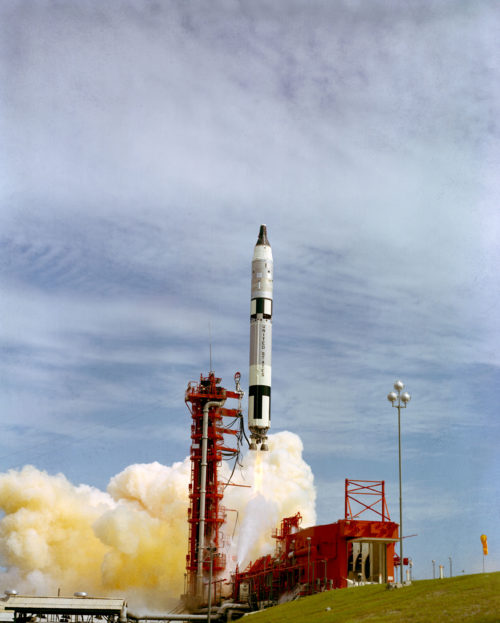
The main problem, wrote fellow astronaut Buzz Aldrin, actually lay in Conrad and Gordon’s impatience in skipping through the formal, six-page, hundred-plus-step sequence of donning and preparing their equipment. “As a result,” Aldrin related in his 1989 memoir, Men from Earth, “they upset cabin pressurization when they checked out Gordon’s oxygen umbilical and he became overheated long before his EVA began.”
The men considered asking Flight Director Cliff Charlesworth to let Gordon begin his EVA one orbit early, but due to issues with tracking and lighting decided to stick with the schedule, a decision that they would come to regret. As they prepared to fit Gordon’s dark sun visor onto his helmet, it proved a stubborn chore; Conrad eventually fastened one side, but could not reach over to snap the other side in place, leaving Gordon hot, bothered and in need of rest. After struggling for a few more minutes, Gordon eventually snapped the right side in place—cracking the sun visor in the process—and was thoroughly winded by the time he cranked open the hatch and stood on his seat at 9:44 a.m. EDT.
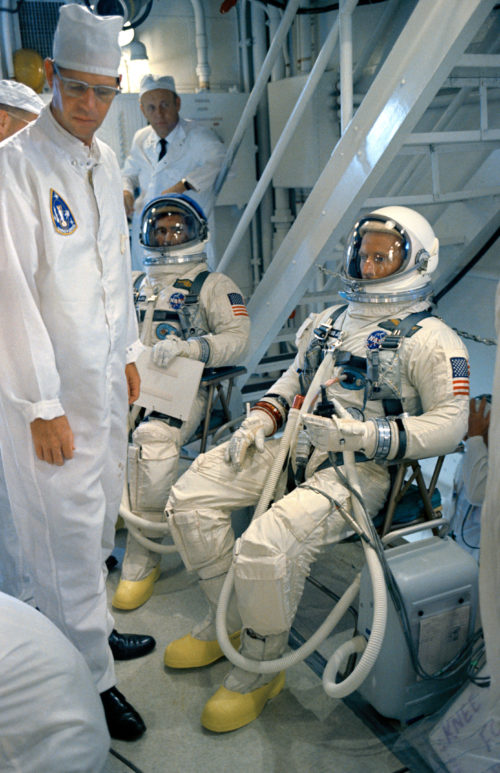
Instantly, Gordon’s exit into space was accompanied by everything else inside the cabin that was not tied down. Standing on his seat, his first activity was to deploy a handrail—a fairly easy task—after which he removed a nuclear emulsion package from outside the spacecraft and passed it in to Conrad, who stuffed it into his foot well. Next, Gordon tried to install a camera in a bracket to photograph his own movements, but this proved difficult. To resolve it, Conrad released enough of the umbilical slide through his gloved hand to let Gordon float above the camera, thump it with his fist, and secure it in place.
The spacewalker’s next task was to attach a 100-foot (30-meter) Dacron tether, housed in the Agena’s docking collar, onto Gemini XI’s nose. As Gordon pushed himself forward, he missed his goal and drifted in an arcing path above the adaptor and around in a semi-circle, until he reached the back of the spacecraft. However, Conrad had released only a couple of feet of the 28-foot (9-meter) umbilical, so he pulled Gordon back to the hatch to start again.
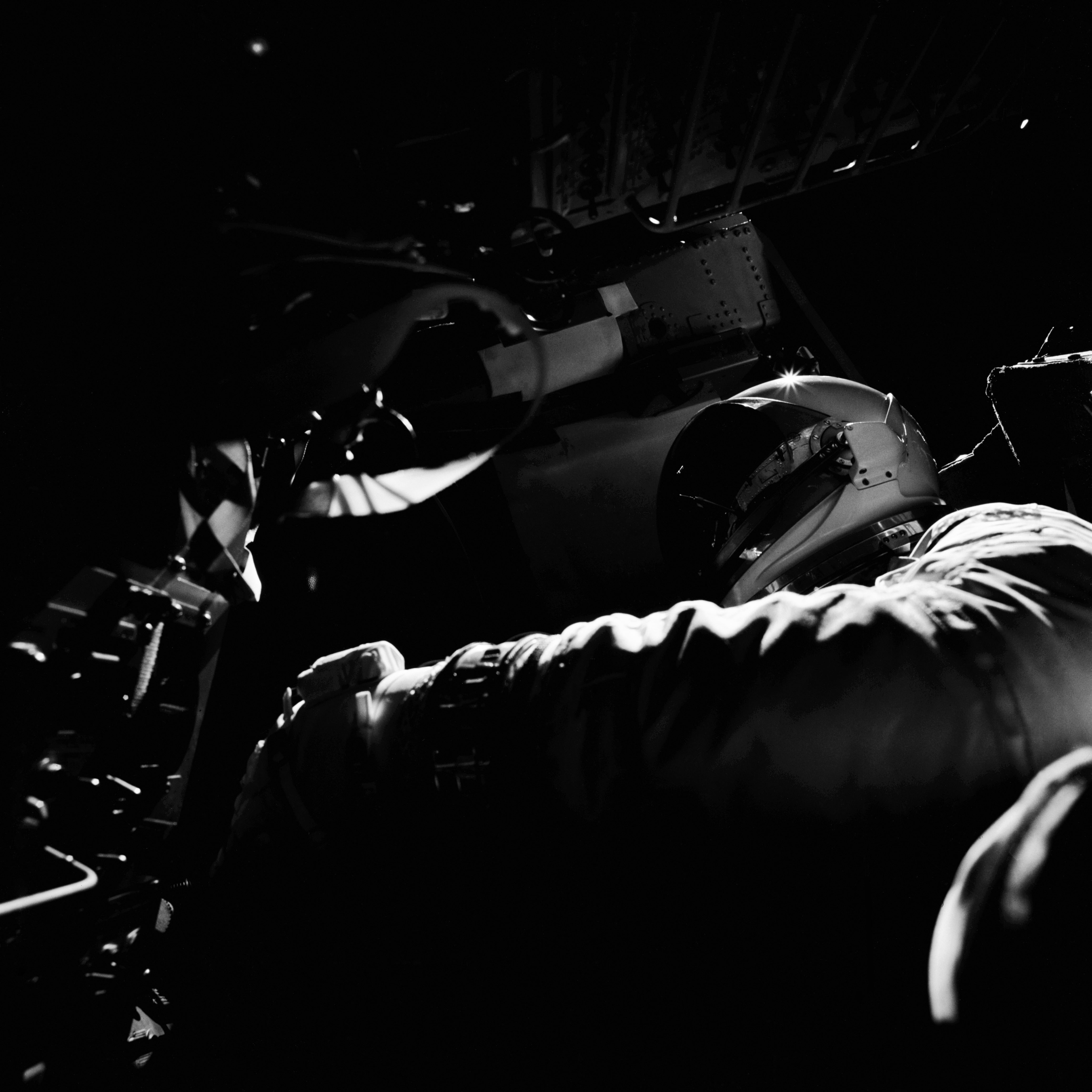
At length, Gordon reached the target and grabbed some handrails to pull himself astride the docking collar—prompting Conrad to yell “Ride ’em, cowboy!”—but the exercise proved more difficult in space than it had in ground tests. In space, he found himself constantly fighting against his suit to keep himself from floating away—a situation rendered all the more difficult by the lack of any kind of “saddle” to help him. All he could do was hold on with one hand and try to operate the tether clamp with the other.
He struggled vigorously, finally securing the line and setting the stage for the tethered flight experiment which would come later in the mission. Yet it was clear to Conrad that Gordon was encountering severe difficulties, and the differences between EVA practice in terrestrial conditions and the real thing were profound: the spacewalker, soaked with sweat and eyes stinging, was reduced to groping his way blindly around.
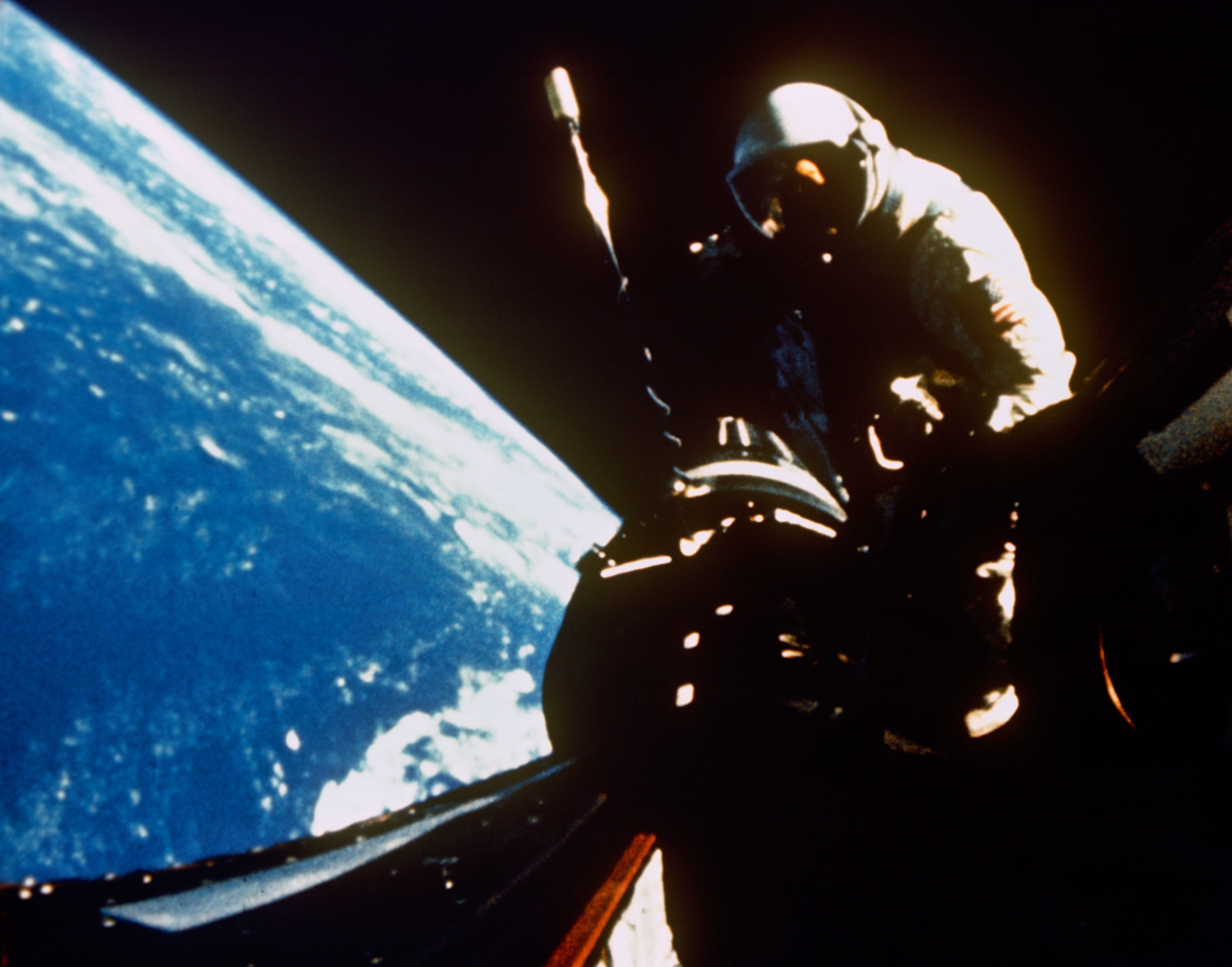
As Gordon neared the hatch, Conrad helped as much as he could, discussing procedures for getting to the spacecraft adaptor to store his compressed-gas zip-gun. It was obvious, though, that Gordon was exhausted: when they passed next over the Tananarive tracking station, Conrad told Capcom John Young that he had “brought Dick back in; he got so hot and sweaty, he couldn’t see.” But Gordon had no trouble whatsoever getting back inside Gemini XI or closing the hatch. Disappointingly, the spacewalk had lasted just 33 of its intended 107 minutes, and one of its key tasks—a power tool evaluation which had evaded Dave Scott on Gemini VIII—was lost.
Gordon’s exhaustion did not disrupt the remainder of the mission. Flight planners had learned to schedule periods of less-vigorous activity immediately after heavy work, and the astronauts’ next task involved leisurely repacking equipment and restoring some semblance of order to the cabin. Additionally, communications with Mission Control dwindled to little more than short transmissions about spacecraft systems and medical checks, which gave them much-needed respite. Conrad test-fired a sluggish thruster, and the men ate a meal and photographed the atmospheric airglow.
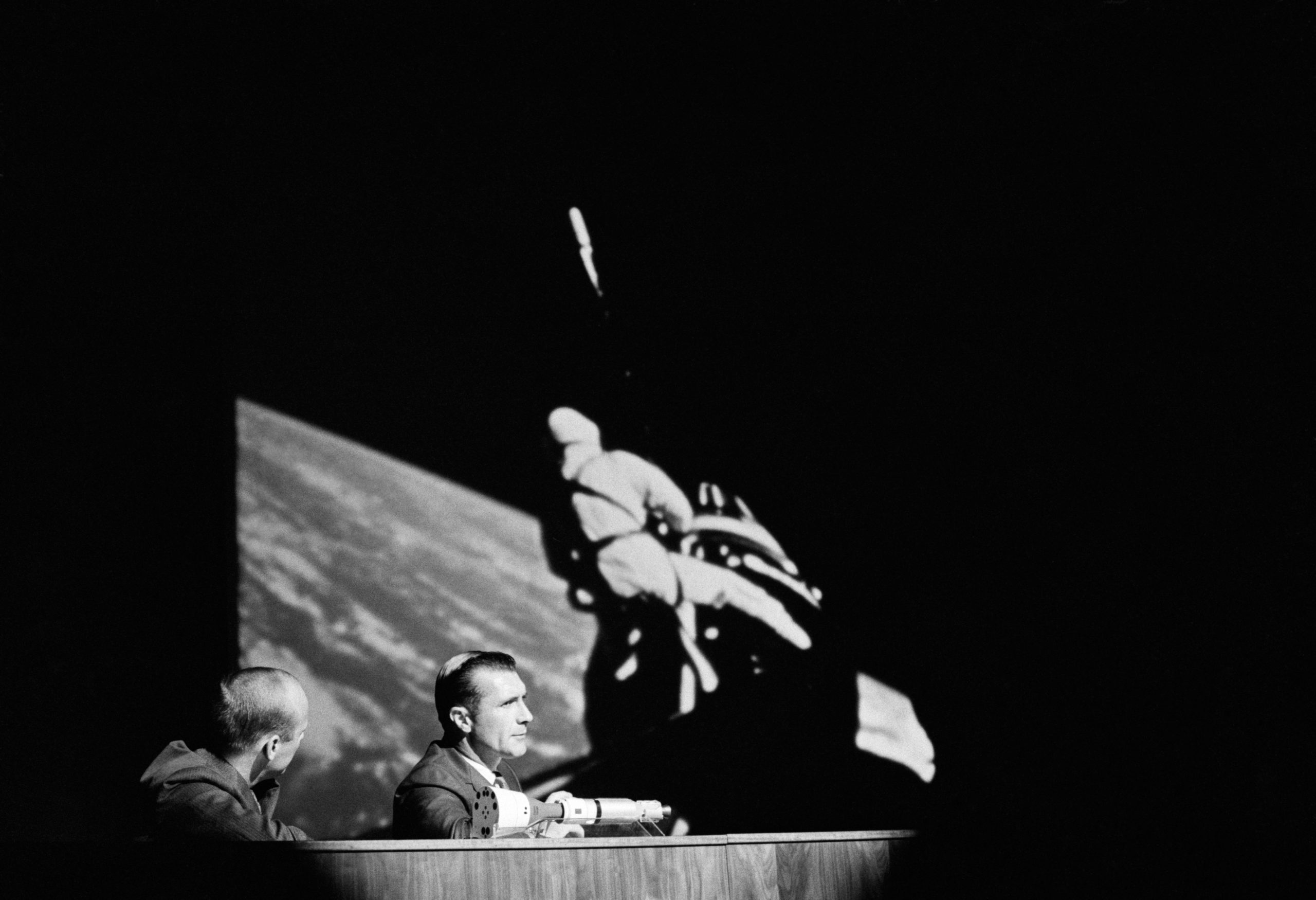
These moments of relatively quiet time would not last. Ahead of them lay the so-called “high ride”—their Agena-assisted climb to a record-breaking altitude of 850 miles (1,370 km). To prepare themselves, they donned their suits, closed their visors, and secured as much cabin equipment as possible, as if in readiness for re-entry, and focused their attention on the Agena. Forty hours after Gemini XI’s launch, at 2:12 a.m. EDT on 14 September, Conrad fired the Agena’s engine for 26 seconds. Both men were electrified by the burn. “Whoop-de-doo!” Conrad yelled. “[That’s] the biggest thrill of my life!”
Beneath them, the men beheld the intense and striking blues of the oceans, the sprinkling of clouds, and the astonishing clarity of Africa, India and Australia. “Looking straight down,” he radioed, “you can see just as clearly. There’s no loss of color and details are extremely good.” To cope with the adverse radiation effects of the Van Allen belts, Gemini XI’s high-apogee orbits were timed to take place over Australia, where levels were calculated to be relatively low.
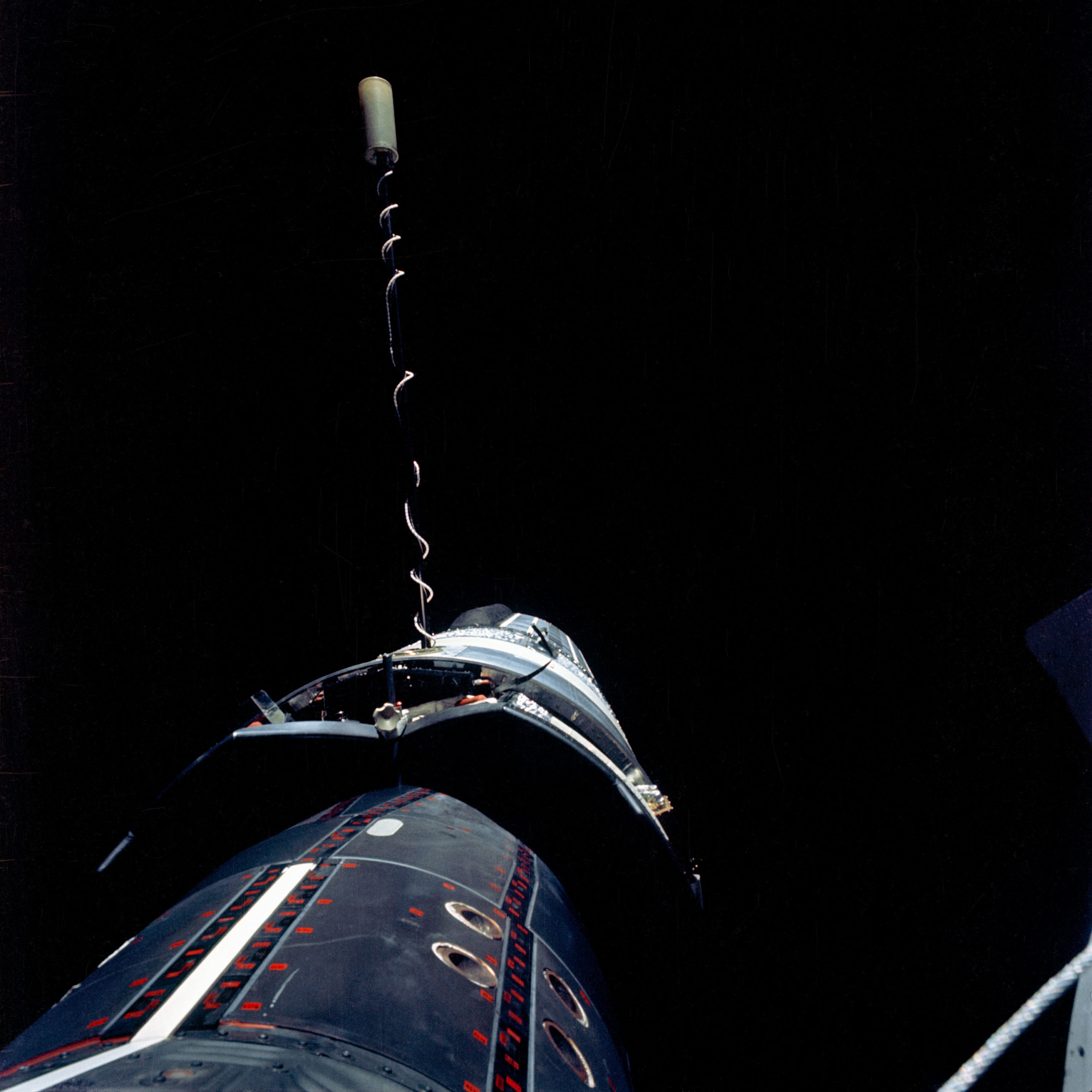
“Sounds like it’s safer up there than a chest X-ray,” said Capcom Al Bean at one stage. It was at this altitude—the highest yet attained by humanity—that the flight’s imaging experiments, notably the synoptic terrain and weather photography objectives, produced stunning results. In total, Conrad and Gordon clicked more than 300 exposures, and their descriptions of the sheer clarity of the eastern hemisphere filled principal investigators with excitement and anticipation.
Not until Apollo 8’s voyage to the Moon in December 1968 would humans travel to higher altitudes, and, almost five decades later, Conrad and Gordon retain the record for the highest-ever Earth orbit attained by humans. “As the coupled craft soar toward their record apogee,” Time magazine told its readers a week after Gemini XI’s splashdown, “the curvature of the Earth’s horizon becomes more pronounced and the Earth assumes an unmistakably globelike shape. Though the pictures are sharp and show geological features plainly, the Earth seems devoid of life; it offers no visible evidence of its teeming population, its great cities, its bridges or its dams.”
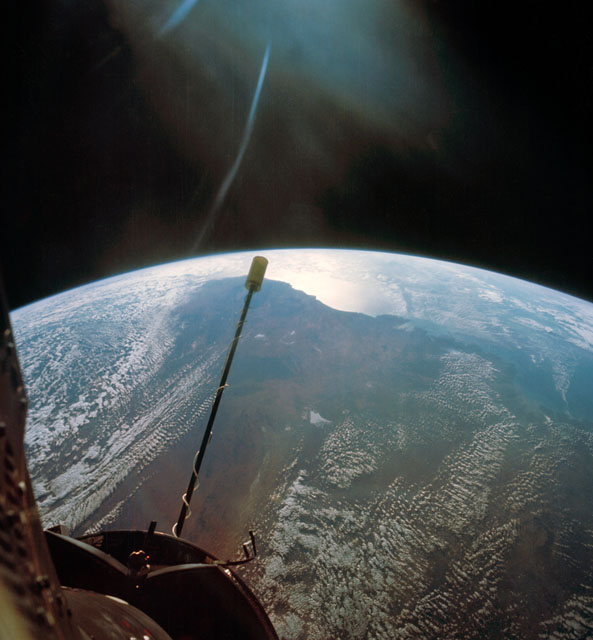
Two orbits later, on their 26th revolution, as Gemini XI passed over the United States, Conrad again fired the Agena’s engine to lower their apogee to about 160 miles (290 km). After a bite to eat, Gordon opened his hatch, high above Madagascar, for his second EVA. This time, he stood on the “floor” of Gemini XI, poked his helmeted head outside and watched the sunset. Secured by a short tether, he could at least use both hands to mount cameras easily in their brackets and remained “outside” for no less than two full hours. “Most enjoyable” was his summary of the stand-up EVA and, indeed, flight surgeons commented that from the biosensor data, it was uneventful.
Their next step was the tethered vehicle exercise, which could be attempted by two different means. One of these assumed the position of a “pole,” always pointing toward Earth’s center—a so-called “gravity-gradient” attitude—in which Conrad and Gordon would have backed their spacecraft out of the Agena’s docking cone slowly until the tether became taut. If properly positioned, a slight thrust would have kept the tether taut and the joined “pole” would have drifted serenely around the globe, each spacecraft maintaining the same relative position and attitude.
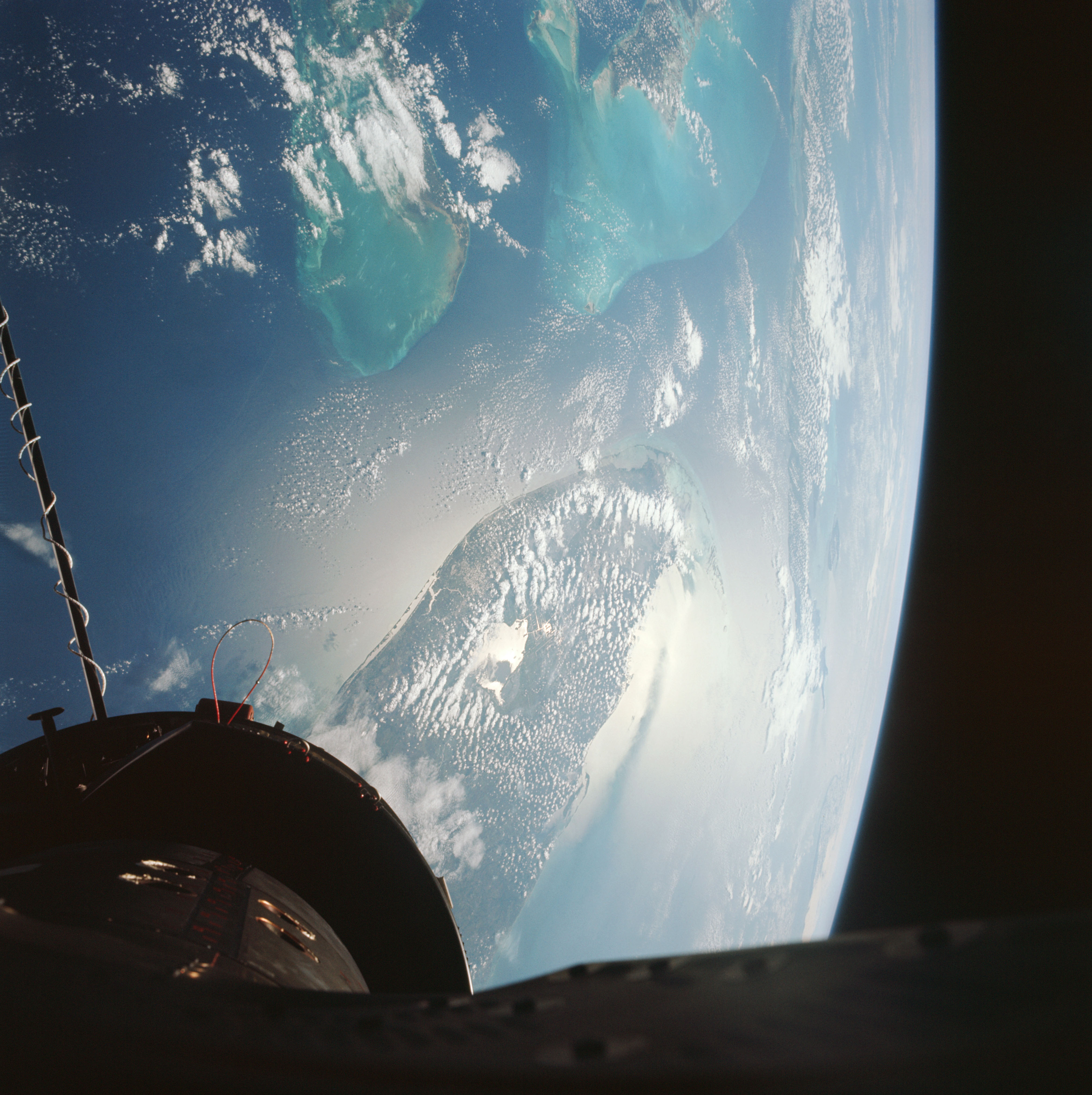
Should this have been unsuccessful, the men were tasked with trying a “spin-up,” or “rotating,” mode. In this case, after physical undocking Conrad would fire Gemini XI’s thrusters to induce a rotation of one degree per second and, as the tethered pair circled Earth, their mutual centre-of-gravity would lie at a specific point on the tether, around which they would do a slow, continuous cartwheel.
Over Hawaii, Conrad and Gordon separated from the Agena and began the cautious attempt to begin the gravity gradient demonstration. There was enough initial tension in the tether to upset the target and cause the Gemini to move toward the Agena’s docking adaptor and Conrad quickly adjusted his motion.
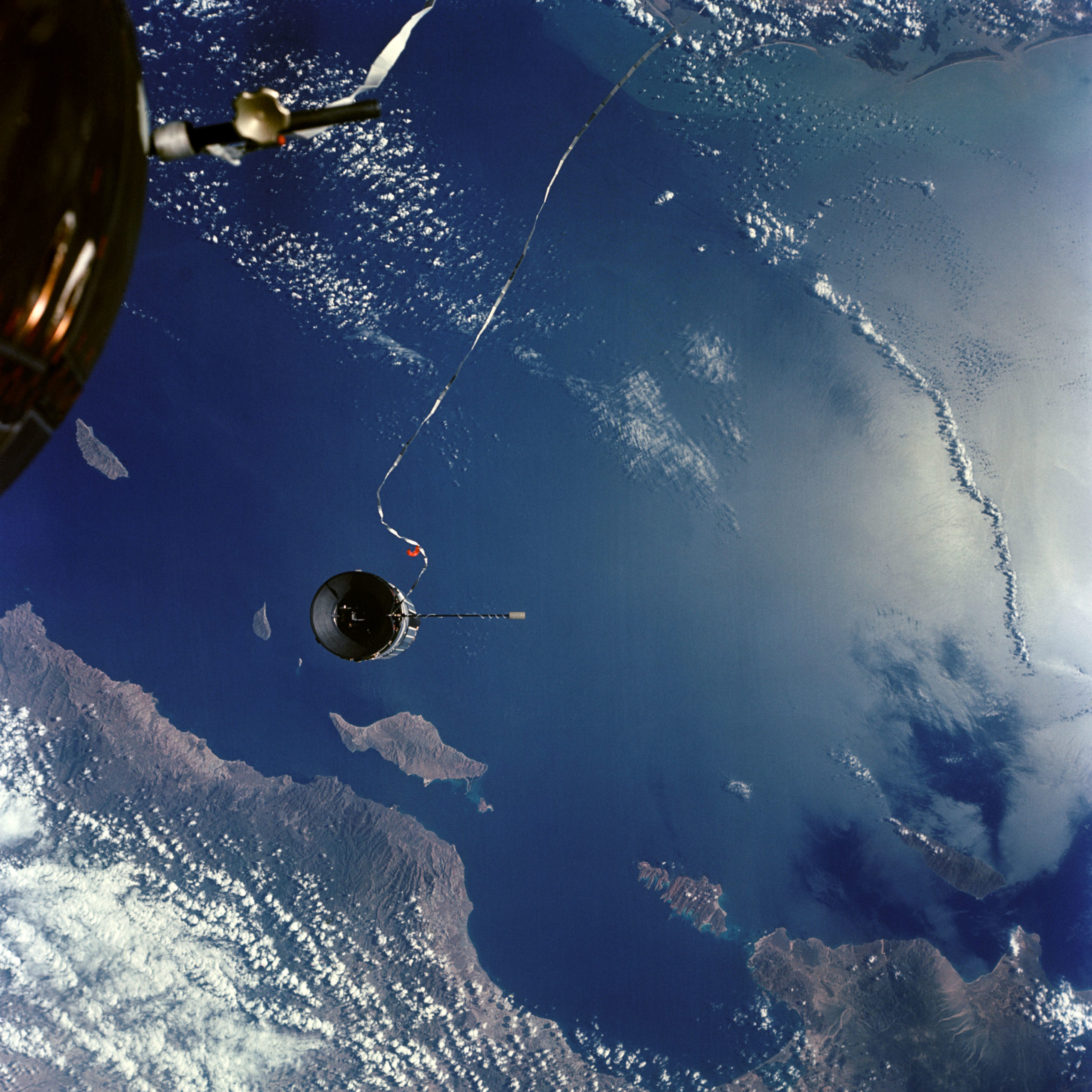
Then, as he backed away, the tether stuck, probably in the stowage container, when just 50 feet (15 meters) had been released. Conrad pulsed the thrusters to free the tether, but it quickly became hung up on a patch of Velcro and he was forced to shift Gemini XI out of vertical alignment to peel the tether off the Velcro pad. This disturbed the Agena again and there still remained about 10 feet (3 meters) of tether to be pulled out.
On the ground, engineers began to worry. The Agena should have taken around seven minutes to stabilize itself; when it took longer, they began to suspect that something was wrong with its attitude-control system and opted to abandon the gravity gradient attempt and adopt the “spin-up” mode instead.
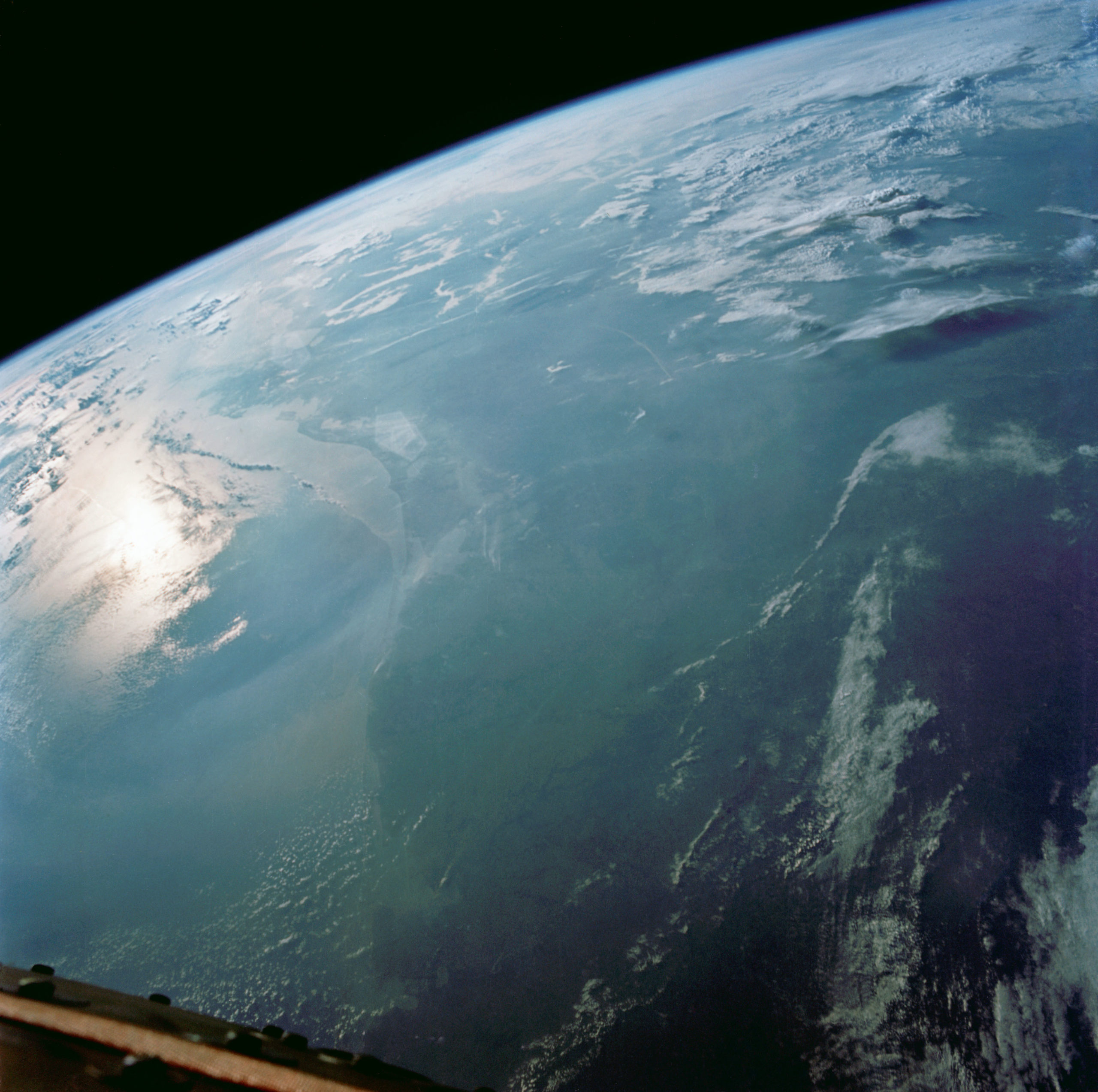
However, when Conrad tried to initiate the rotation, another problem arose when he could not get the tether taut; it seemed to rotate counter-clockwise. “This tether’s doing something I never thought it would do,” he told Capcom John Young. “It’s like the Agena and I have a skip rope between us and it’s rotating and making a big loop. Man, have we got a weird phenomenon going on here!”
Although the spinning line was curved, it also had tension, and for several minutes Conrad and Gordon jockeyed Gemini XI’s thrusters to straighten the arc. Eventually, the tether straightened and became taut and Conrad rolled the spacecraft and fired the thrusters to begin the slow cartwheeling motion. At first, it seemed that he had stretched the tether, which had a big loop in it, but steadily, as both astronauts gritted their teeth, centrifugal force took over and it smoothed out. A 38-degree-per-minute rotation rate was obtained and remained steady throughout a night orbital pass.
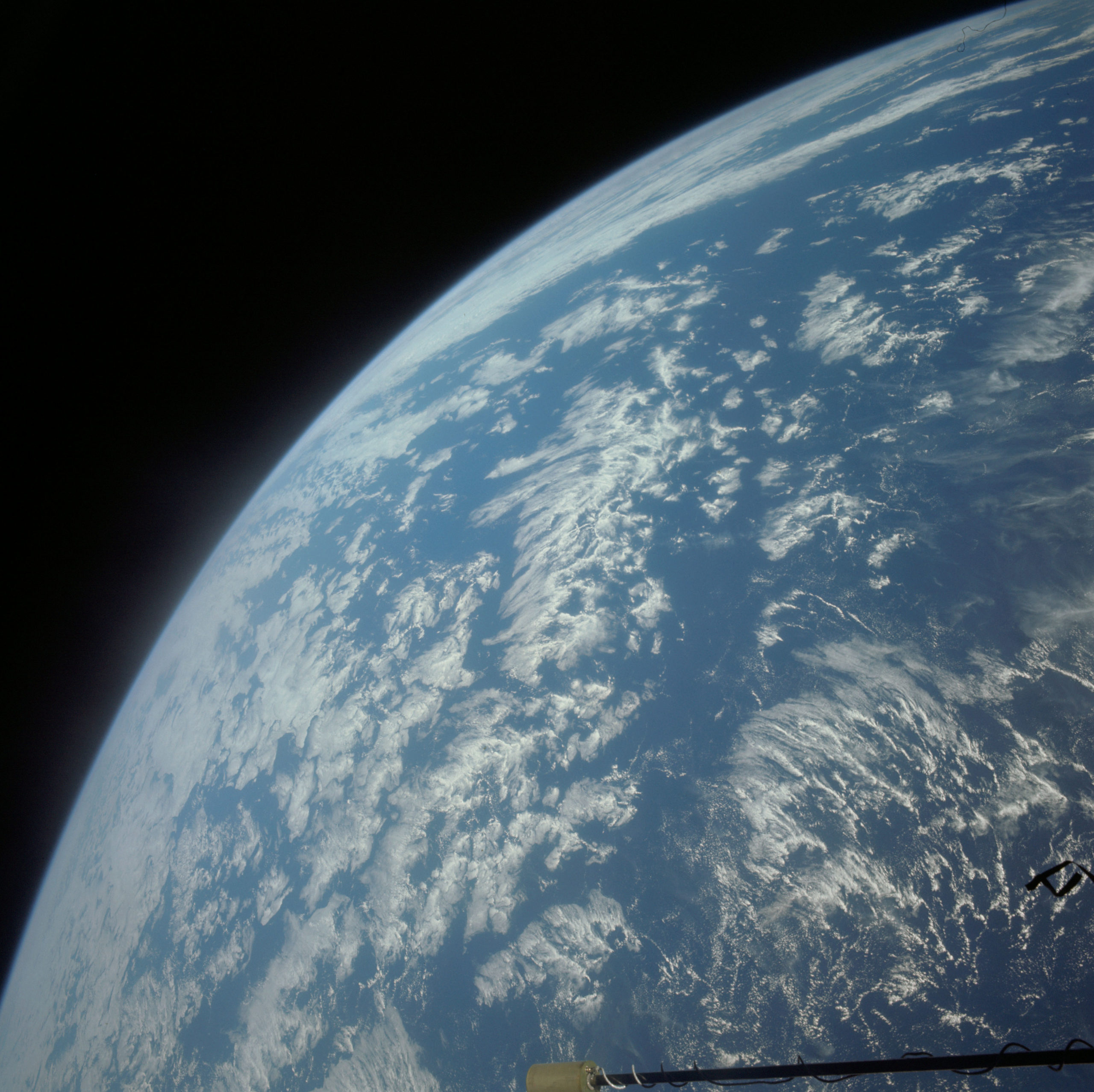
Moving into dawn, they were asked by the Hawaii capcom to accelerate their spin-up rate and, with some reluctance, Conrad agreed. Suddenly, Gordon shouted “Oh, look at the slack! It’s going to jerk this thing to heck!” When the added acceleration started, the tether tightened, then relaxed, causing a “slingshot” effect which seesawed both astronauts up to 60 degrees in pitch. In response, Conrad steadied the spacecraft and, to his surprise, the Agena stabilized itself.
Their rotation rate checked out at 55 degrees per minute and they were able to test for a tiny amount of artificial gravity: When they placed a camera against Gemini XI’s instrument panel and let go, it moved in a straight line to the rear of the cockpit and parallel to the direction of the tether. Neither of the astronauts, however, felt any physiological effect of gravity. After three hours of docked operations, they jettisoned Gemini XI’s docking bar and pulled away.
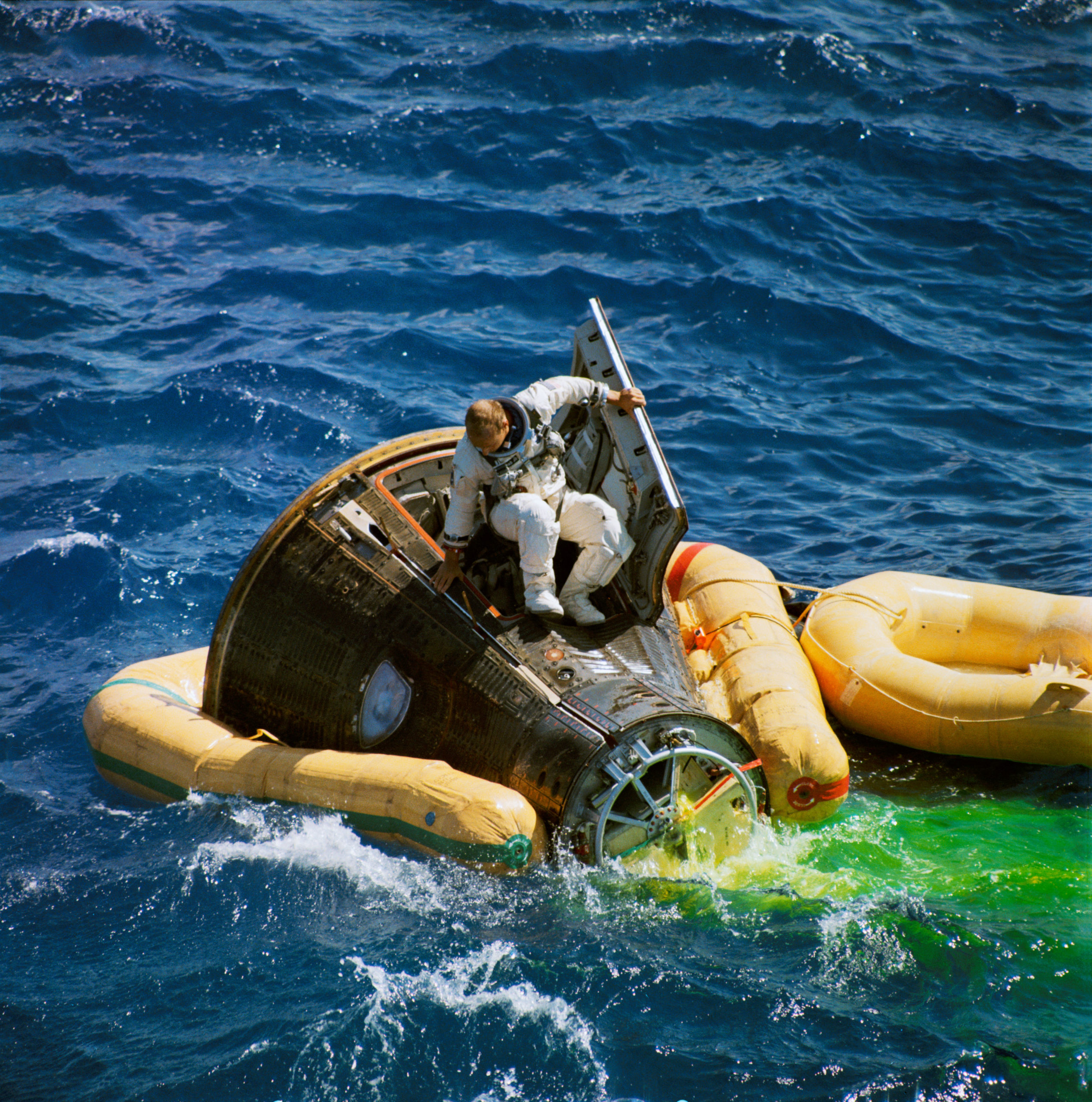
Despite understandable disappointment that the gravity gradient technique could not be fully demonstrated, the spin-up mode at least proved that station-keeping could be done economically. After undocking, Conrad originally intended to decrease his spacecraft’s speed, allowing him to pull ahead of the Agena, but was advised instead to prepare for a “coincident-orbit” rendezvous, whereby he would follow the target in its exact orbital path. This would demonstrate their ability to station-keep at very long range with little fuel usage.
As a result of the plan change, Gemini XI’s separation maneuver was adjusted; instead of a retrograde firing, Conrad and Gordon “added” speed and height to their orbit, such that Agena-XI passed “beneath” and in front of them. Next, they fired their thrusters to place themselves in the same (coincident) orbit as the Agena, trailing it. Three-quarters of a revolution around Earth, Conrad decreased his “forward” speed and, as expected, Gemini XI dropped into the Agena’s orbital lane, 20 miles (32 km) behind it, with no relative velocity between the pair.
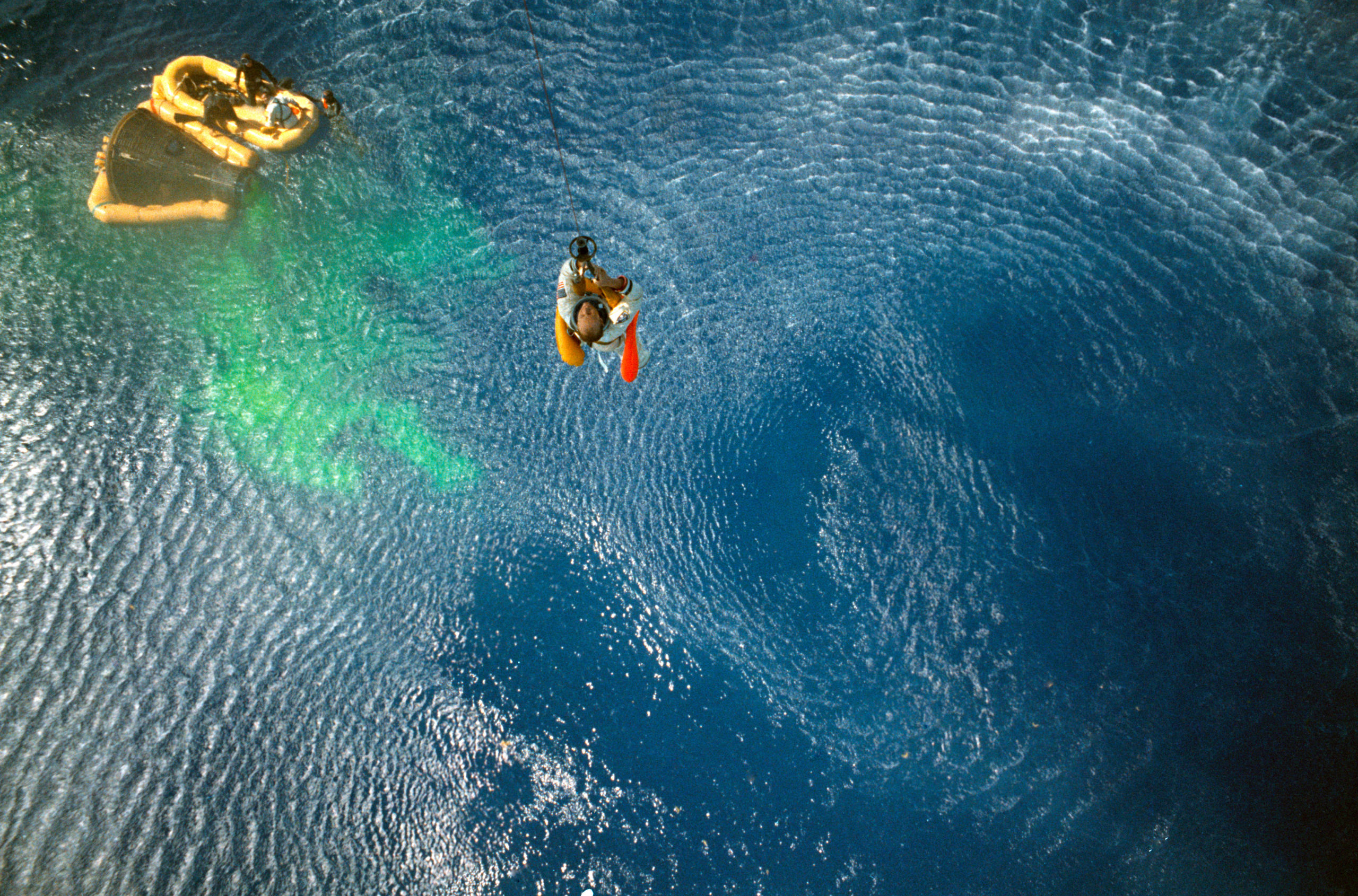
Turning their attention back to the Agena, they asked ground controllers how far they were from the target and were advised that their distance remained 20 miles (32 km), closing very slowly. A second rendezvous, beginning early on 15 September, was near-perfect: Conrad tilted Gemini XI’s nose 53 degrees above level flight and fired the forward thrusters. This placed them in a lower orbit than the Agena, ready to catch up with it, and they took some time to tend to their experiments.
An hour later, Conrad fired the aft thrusters to raise his spacecraft’s orbit, then began to brake Gemini XI until he finally reported that he was on-station and steady with the target once more. Twelve minutes later, they executed a separation burn from the Agena for the final time. By this stage, the success had been so great that they could afford to be jocular; Conrad even asking Flight Director Glynn Lunney to send up a tanker to refuel them for more rendezvous.
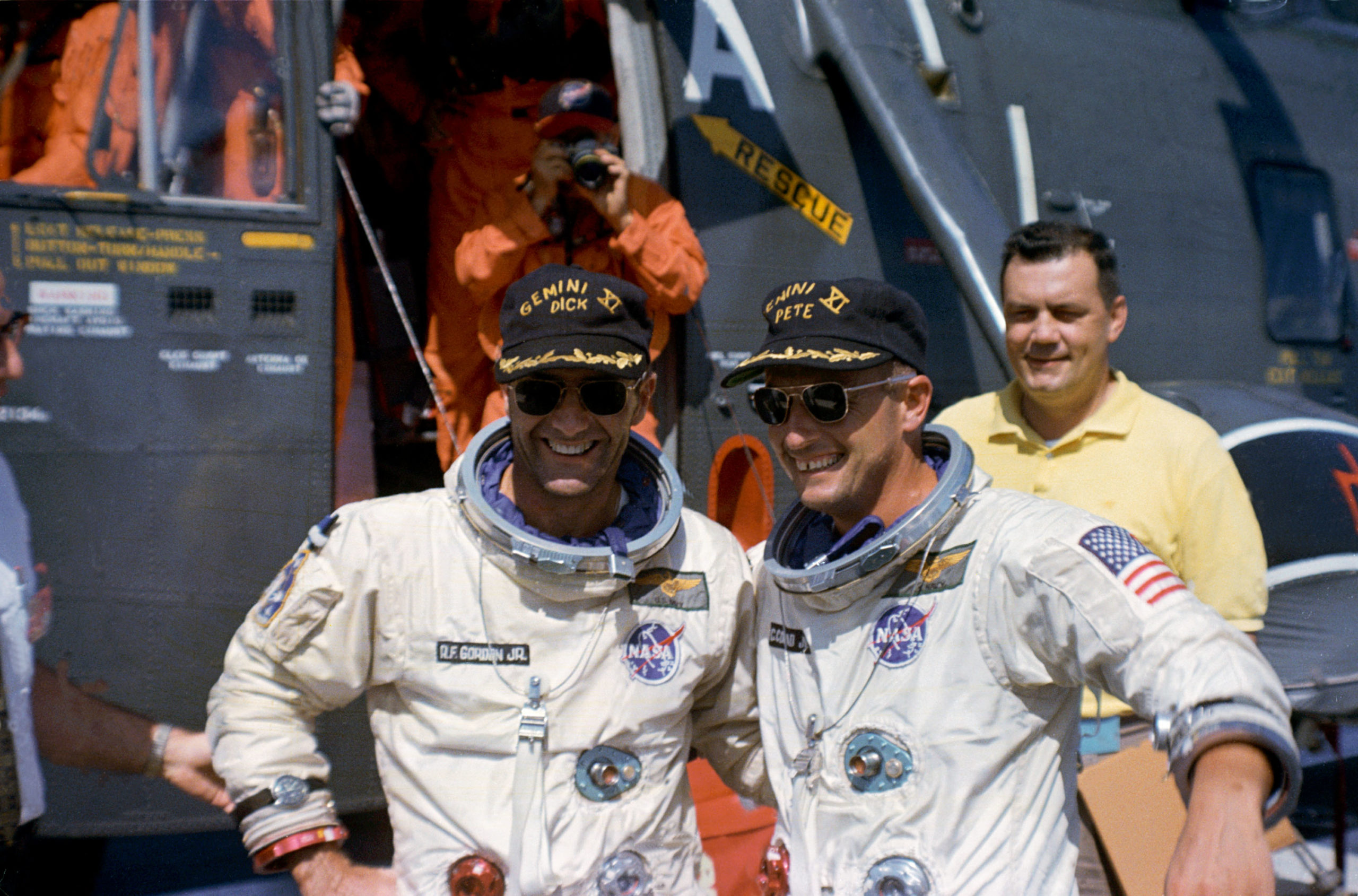
The ambitious mission came to a close with a fully automatic re-entry; unlike previous returns, in which the command pilots had flown their spacecraft down from 70 miles using the Gemini’s offset center-of-gravity to provide lift for changes in direction, Conrad would not use his hand controller in conjunction with computer directions.
At 8:24 a.m. EDT on 15 September 1966, partway through their 44th orbit, the retrorockets fired. Conrad disengaged his hand controller and put the system onto autopilot. This performed admirably and Gemini XI splashed down safely within six miles of the helicopter carrier U.S.S. Guamat 8:59 a.m. Their mission left only one more Gemini flight and cleared another hurdle for humanity’s first piloted foray to the Moon.
Quelle: AS
